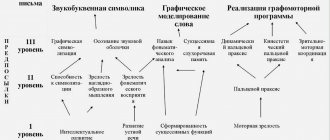Speech is a complex motor skill implemented by a large number of anatomical structures. The structure of the human vocal apparatus includes the organs of the respiratory system, larynx, tongue, teeth, etc. If the integrity of any of them is violated, the sound production process is disrupted. Knowledge of the anatomical structure and operating principle of the articulatory organs is important not only for singers or other professions related to music, but also for ordinary people. Speech disorders can occur in both children and adults, leading to disruption of the processes of social adaptation and learning.
Production of sounds
The process of sound and voice formation has been well studied over the past decades. The acoustic component of speech arises as a result of the work of the muscles of the peripheral apparatus. It works like this. When starting a conversation, a person unconsciously exhales slowly. The air flow from the lungs enters the larynx, the ligaments of which are in a certain position corresponding to the required sound. In addition, the tongue, lips and lower jaw also take the necessary position. The vibration of the vocal cords in the larynx during the passage of air flow creates a sound that is corrected by the organs of the oral cavity.
Speech is a complex process in which several dozen anatomical structures are involved. Organic or functional disorders in any of them will lead to a change in voice or the appearance of speech defects of varying severity.
Anatomy of speech
The vocal apparatus is a set of anatomical structures that provide the formation of voice and speech. In its structure, it is customary to distinguish two large sections: peripheral and central. The central section is represented by the brain, in particular, the cerebral cortex, a number of subcortical nodes and pathways connecting them together. In addition, it includes the nuclei of the cranial nerves, which are involved in sound production. The anatomy of the peripheral vocal apparatus includes bone, cartilage and muscle formations, ligamentous apparatus and peripheral nerves that perceive or transmit any information to the organs of articulation.
The peripheral department is divided into three functional departments that perform different tasks: respiratory, vocal and articulatory. If any of them malfunctions, speech disorders occur.
Respiratory section
The main sound-producing factor is air passing through the respiratory tract. In this regard, vocalists always practice proper breathing to improve the acoustics of their voice. Breathing movements are carried out reflexively; as a rule, in ordinary life a person does not think about when to inhale or exhale. The regulatory mechanism is associated with the respiratory center in the medulla oblongata.
The respiratory section includes both lungs, the tracheobronchial tree, the diaphragm and the intercostal muscles. The movements of the latter lead to expansion of the chest during inhalation and its narrowing during exhalation. The diaphragm is involved in the abdominal type of breathing, which is carried out mainly due to its stretching.
The formation of sounds and words occurs during exhalation. The air passing through the vocal and articulatory departments causes their structures to vibrate. If a person has lung diseases, the sound of speech is distorted.
Voice department
In phoniatry, there are three characteristics of any person’s voice: timbre, pitch and strength. All of them are created when the vocal cords vibrate as air passes through them. The amplitude of the vibration determines the strength of the voice. The stronger the vibration, the higher the sound. Timbre is determined by voice coloring, specific to each individual person. The tension of the folds and the degree of air pressure on them create a certain pitch of the voice.
One of the most common complaints from patients is changes in voice characteristics. Most often, this condition is associated with functional disorders that occur against the background of infectious and non-infectious diseases.
Sound department
The structure of the articulatory part of the vocal apparatus includes anatomical formations that are located in the oral cavity: the lower jaw, tongue, soft palate and lips. Movements of these structures are carried out with the help of muscles. If their work is disrupted, a person may develop various speech defects. Speech therapy exercises and massage allow you to train muscles, improving speech.
The tongue is the main articulatory organ. Its basis is striated muscles, which provide movement and change in shape. During a conversation, it can become longer, shorter, and also change its width. The structure of the tongue is divided into three parts: the root, fixed to the floor of the oral cavity, the back and the tip.
The lower and upper lips are movable structures. They participate in the pronunciation of almost all sounds, as they determine the speed of air flow from the oral cavity. Thanks to facial muscles, they can change their shape, which also plays an important role in the physiology of speech in humans. The mandible is located at the bottom of the skull and has a limited range of motion. Participates in the pronunciation of stressed vowels: “O”, “U”, “I” and a number of others.
The soft palate forms the upper border of the oral cavity and is tightly connected to the hard palate. Thanks to developed muscle fibers, it can rise and fall down. Anatomically separates the oral cavity from the nasal pharynx. It has a small tongue at the end. When pronouncing the consonants “N” and “M”, the velum is lowered. All other sounds are pronounced with the soft palate lowered. When movement is impaired, the voice becomes nasal, which is associated with the direction of air flow into the nasal cavity.
If a speech defect appears, you should not try to eliminate it yourself. Such treatment should be carried out by a speech therapist or doctor.
The articulatory apparatus also includes a number of passive structures: dentition, nasal cavity, hard palate and pharynx. They participate in sound pronunciation, acting as support points for the tongue and soft palate.
Functions and structure of the peripheral part of the speech apparatus.
Peripheral part of the speech apparatus.
Respiratory
The respiratory section of the peripheral speech apparatus forms the energetic basis of speech, providing the so-called speech breathing.
Anatomically, this section is represented by the chest, lungs, bronchi and trachea, intercostal muscles and muscles of the diaphragm. The lungs provide a certain subglottic air pressure. It is necessary for the functioning of the vocal folds, voice modulations and changes in its tonality. During physiological breathing (i.e., outside of speech), inhalation occurs actively due to contraction of the respiratory muscles, and exhalation occurs relatively passively due to the lowering of the chest walls and the elasticity of the lungs.
Voice
The oscillatory movements of the vocal folds generate sound waves.
During phonation, the vocal folds tense, close and produce oscillatory movements. Outside of speech, the folds are moved apart.
The strength of the voice depends mainly on the amplitude (span) of vibrations of the vocal folds, which is determined by the amount of air pressure, i.e., the force of exhalation.
The vocal folds, which are located in the larynx, act as a sound vibrator.
The vocal section consists of the larynx with the vocal folds located in it. The larynx is a wide, short tube consisting of cartilage and soft tissue. It is located in the front of the neck and can be felt through the skin from the front and sides, especially in thin people.
From above the larynx passes into the pharynx. From below it passes into the windpipe (trachea).
At the border of the larynx and pharynx is the epiglottis. It consists of cartilage tissue shaped like a tongue or petal. Its front surface faces the tongue, and its back surface faces the larynx. The epiglottis serves as a valve: descending during the swallowing movement, it closes the entrance to the larynx and protects its cavity from food and saliva.
Modulation of the main and additional tone of the voice
The main resonators of the human voice are the pharynx, oral cavity and nasal cavity with its paranasal sinuses, as well as the frontal cavity.
A certain timbre of voice.
The timbre is given by the cavities of the trachea and bronchi, the chest as a whole, and the laryngeal cavity. Resonators differ among individual people in shape, volume, and the characteristics of their use during speech, which gives the voice an individual timbre coloring. The soft palate and those muscles that cover the space between the nasopharynx and oropharynx take a special part in the resonance effect.
The resonators that are formed by the bones of the skull, namely the nasal cavity, the frontal cavity, do not change their volume, therefore they generate sounds in a very narrow range.
Articulatory
The volume and clarity of speech sounds are created thanks to resonators.
Resonators are located throughout the extension tube - this is everything that is located above the larynx: the pharynx, oral cavity and nasal cavity. When producing speech sounds, the extension pipe performs a dual function: a resonator and a noise vibrator.
Extension pipe.
The muscles of the tongue play a major role in the production of speech sounds. When pronouncing a single speech sound, part of the muscle fiber may be tense, while another part is relaxed. Tension of the articulatory muscle during oral speech is associated not only with the specific work of pronouncing a single sound. It bears the influence of residual stress from the utterance of the previous sound, as well as the preparatory stress associated with the utterance of the subsequent sound, which are part of the word (coarticulation). In addition, the emotional state in which the speaker is
also affects the degree of muscle tension of both the tongue and the entire speech apparatus. Thus, the muscles of the tongue experience a complex of different influences.
The tongue is a massive muscular organ. When the jaws are closed, it fills almost the entire oral cavity. The front part of the tongue is mobile, the back part is fixed and is called the root of the tongue. The movable part of the tongue is divided into the tip, the leading edge (blade), the lateral edges and the back. The complexly intertwined system of tongue muscles and the variety of their attachment points provide the ability to change the shape, position and degree of tension of the tongue within a wide range. This is very important, since the tongue is involved in the formation of all vowels and almost all consonant sounds (except labials).
Plays an important role in the formation of speech sounds. Articulation consists in the fact that the listed organs form slits, or closures, that occur when the tongue approaches or touches the palate, alveoli, teeth, as well as when the lips are compressed or pressed against the teeth.
Lower jaw, lips, teeth, hard palate, alveoli.
During quiet breathing, the soft palate is relaxed, partially closing the entrance to the oral cavity from the pharynx. During deep breathing, yawning and speech, the velum palatine rises, opening the passage into the oral cavity and, conversely, closing the passage into the nasopharynx.
Soft sky.
They take part in pronouncing all the sounds of the Russian language.
Oral cavity and pharynx.
Literature:
1. Volosovets T.V.; Overcoming general speech underdevelopment in preschool children. Educational and methodological manual / Ed. ed. - M.: V. Sekachev, 2007. - 224 p.
2. Gvozdev A. N. From first words to first grade. Diary of scientific observations. Saratov: Saratov University Publishing House, 1981
3. Speech therapy: Textbook. for students defectol. fak. ped. higher textbook institutions / Ed. Volkova L.S., Shakhovskaya S.N.;
4. Luria A. R.; Fundamentals of neuropsychology. Textbook aid for students higher textbook establishments. - M.: Publishing House, 2003. - 384 p.
5. Chirkina G.V. Programs of compensatory preschool educational institutions for children with speech impairments. – M.: Education, 2009.
Speech apparatus and defects
The degree of development of the speech apparatus determines the quality of pronunciation of sounds. Diseases of any of the departments are manifested by a deterioration in sound pronunciation and change the characteristics of a person’s voice. The task of speech therapists and doctors when identifying phoniatric symptoms is to identify the causes of their occurrence and select methods to eliminate the defects.
Due to the complexity of the structure of the speech apparatus, there are many possible causes of impaired sound pronunciation. Diagnostic measures should always be comprehensive and selected individually for each person. There are several reasons for the development of speech defects, which occur most often:
- organic disturbances in the structure of individual structures;
- their functional immaturity, which causes incorrect movements during the conversation;
- neurological disorders in those parts of the central and peripheral nervous system that are involved in the formation and formation of sounds.
With these defects, a person often notices problems with breathing, swallowing food and liquids. Such symptoms gradually lead to a decrease in the level of quality of life and can cause impaired adaptation in society, depression and other negative consequences. If you have delayed speech development or other defects, you should always seek professional help from doctors or a speech therapist. Specialists will conduct the necessary examinations and select corrective measures to eliminate the organic or functional defect.
The human vocal apparatus has a complex structure and consists of three main parts: respiratory, vocal and articulatory, or sound-pronouncing. All structural departments act in concert, determining not only a person’s voice, but also the formation and pronunciation of all sounds and words. The regulation of the speech process is carried out by the central nervous system, namely the cerebral cortex, subcortical extrapyramidal systems and the nuclei of the cranial nerves. Knowledge of anatomy allows you to promptly identify changes in the speech organs, primarily located in the oral cavity.
The Republican Scientific and Practical Center for Mental Health is developing new technologies for the treatment of speech disorders in children, including those with autism. Experience has been accumulated in the use of transcranial magnetic stimulation (TMS), micropolarization, and bioacoustic correction in the treatment of mental disorders.
Together with a German company, a scientific project is being carried out on the combined use of TMS and transcutaneous electrical neurostimulation (TENS) in children from 3 to 16 years old with specific speech development disorders and in patients with speech disorders due to autism. The study was approved by the ethics committee of the Republican Scientific and Practical Center for Mental Health.
Causes and characteristics of speech disorders
The procedure for transmitting impulses to the central nervous system
Normal speech development has wide age limits for the development of speech as a higher mental function. However, the absence of single words or words-related speech formations by two years, or simple expressions or two-word phrases by three years, should be regarded as a significant sign of delay. The number of children with speech disorders is growing, according to a number of studies - 25% among children of primary school age.
The formation of speech in girls and boys differs not only in the timing of the appearance of various speech elements, but also in their quality. For example, it is believed that girls are more inclined to construct words that are not in common use. While boys strive for greater accuracy through semantic differentiation, etc.
Speech development disorders are at the intersection of many specialties. Speech is a key factor for the development of a child’s thinking and intelligence in general, therefore, disruption of its formation inevitably entails communication problems, behavioral disorders, and school failure. Speech development delays are observed in a wide range of diseases.
Thus, their cause may be chronic otitis media and other conditions leading to hearing impairment, abnormalities in the development of the articulatory apparatus, cerebral palsy, etc. In addition, speech disorders occur in children with autism. In some cases, at the initial stage it is impossible to establish the etiology of the disorder, therefore, dynamic observation is necessary for accurate diagnosis and assessment of prognosis. Speech development is often influenced by hereditary predisposition, immune and neurochemical disorders, or environmental factors.
In a number of disorders, normal speech development occurs up to a certain age, and then the process stops or even regresses (such conditions are defined not as a delay in speech development, but as a developmental deviation). For comparison: in autism, speech development, as a rule, is altered even at the pre-speech stage (an animation complex is not formed, the humming is poor, low-emotional, “bird-like” language, at the same time the child pronounces whole phrases, but does not use them for communication).
Diagnosis of speech development disorders requires the participation of not only doctors, but also speech therapists, psychologists, specialists in correctional pedagogy, together with the child’s parents.
The basis of many speech development disorders is an impaired balance of inhibition and excitation processes in the brain, which is determined by various neurophysiological mechanisms: the work of synapses, the level of activity of the glutamatergic (excitation) and GABAergic (inhibition) systems, interhemispheric and intracortical interactions, deficiency or excess of certain micro- and macroelements, vitamins, etc. Therefore, restoration of the imbalance of these processes is the basis of the applied hardware treatment methods.
Treatment methods for speech disorders
Currently, there are no medications that could lead a child with a speech development disorder to a full recovery or to an undoubted improvement in the condition, so much attention is paid to speech therapy and psychotherapeutic correction, as well as hardware neurostimulation methods.
Neurostimulation technologies, which include TMS, transcranial electrical stimulation, micropolarization, TENS, are alternative methods of modulating the brain in neurological and mental disorders. Their advantage compared to pharmacotherapy is the absence of toxic effects on the body. In this case, the clinical effect is achieved through the impact of small currents on the excitable structures of the nervous system, which allows you to directly modulate their work and control the processes of neuroplasticity.
The most effective hardware method for treating brain diseases is considered to be TMS, in which a high-intensity alternating magnetic field is focused on certain cortical areas, generating small currents in the axons, which is transmitted both to the cortical neurons adjacent to the site of stimulation, and to the deep parts of the brain and other cortical areas. zones functionally associated with the stimulation zone. This makes it possible to non-invasively influence entire neural networks.
Using certain TMS protocols (high- and low-frequency), it is possible to cause activation of both excitation and inhibition in the central nervous system. In autism, processes of excessive excitation of cortical neurons predominate, caused by hyperactivity of glutamatergic structures, multiple formation of an excessive number of neural connections, which interferes with the learning and normal development of the child, the formation of stable forms of behavior and speech skills. The impact of low-frequency TMS on prefrontal structures can reduce hyperactivity and stabilize the processes of neuroplasticity.
The Republican Scientific and Practical Center for Mental Health has accumulated experience in the use of TMS in the treatment of mental and behavioral disorders, as well as in the introduction of scientifically based techniques into medical practice. Thus, in 2019, the Ministry of Health approved the instructions for use “Method of treatment of general developmental disorders, specific disorders of speech and language development with transcranial magnetic stimulation,” which describes in detail the algorithm for using TMS for these disorders.
Selecting a transcranial magnetic stimulation protocol
Combined TMS and TENS procedure
In young children, the right hemisphere of the brain is ontogenetically more developed, primarily responsible for concrete imaginative thinking. Speech centers are located in the left hemisphere. The impact of low-frequency TMS on the dorsolateral prefrontal cortex (DPFC) of the subdominant hemisphere causes long-term inhibition in its neurons and reduces its antagonistic inhibitory effect on homologous zones of the left hemisphere. This promotes the activation of functional centers in the left hemisphere, which are primarily responsible for logical-abstract analytical thinking.
The high-frequency TMS protocol (10 Hz or more) on the projection of the right DPPC, although (as is believed in a number of studies) to be more effective, is undesirable for use in children.
Firstly , in children the threshold of the evoked motor response (the minimum intensity of the pulsed magnetic field supplied by the device to generate an action potential of 50 μV in certain muscles of the hand) is quite high - 70-100% of the device’s power, therefore it is difficult to tolerate when applying a therapeutic series of high-frequency pulses .
Secondly, in early childhood, especially in autism, slow-wave activity is recorded according to the electroencephalogram, so there is a risk of provoking a generalized seizure when performing high-frequency TMS.
After low-frequency TMS of the right DLPK (for 20 minutes), low-frequency TMS is applied to the homologue of the projection of the speech center in the right hemisphere to activate a similar center in the dominant hemisphere. One TMS procedure lasts 20–30 minutes. The course of treatment includes 15–20 procedures performed daily or every other day with a break on weekends.
Transcutaneous electrical neurostimulation technique
An alternative method for activating cortical structures is to stimulate the peripheral nerves of the extremities using TENS. Cutaneous electrodes are attached to the projection of the median or ulnar nerves of the dominant arm and deliver a low-intensity alternating electrical current, which can spread both to the periphery from the site of action and centripetally to the neurons of the brain.
The method has been known since 1965, but was used mainly for the treatment of pain syndromes. In the last decade, functional TENS has been actively used in the recovery of patients after traumatic brain injuries and strokes with aphasia and paresis of the limbs. The projection of the hand and muscles involved in the act of speech, as well as the motor center of speech (Broca's center) are both structurally and functionally connected. Therefore, activation of the motor and sensory centers of the hand during TENS promotes speech development by analogy with activities for the development of fine motor skills (finger games, drawing, etc.). In addition, electrical stimulation of peripheral nerves activates neuroplasticity processes in the brain.
The use of cortical magnetic field stimulation and electrical stimulation of peripheral nerves makes it possible to have a multimodal, multi-level effect on the processes of neuroplasticity and brain development in children. The combined use of TMS and TENS has not only a synergistic, but also a potentiating effect on the functional state of the brain.
The study evaluates the dynamics of clinical symptoms, the degree of restoration of impaired speech function (initially and after the course of treatment): subjective manifestations (assessment by the patient and the child’s parent) and objective assessment by the researcher according to the treatment protocol.
Contraindications for inclusion in the study are intracranial ferromagnetic and cochlear implants, focal changes in the brain (neoplasms, inflammatory diseases of the central nervous system in the acute period, large cerebral aneurysms or suspicion of them), acute and chronic diseases in the stage of decompensation.
Clinical case of combined TMS and TENS use
The parents of a five-year-old girl, who was diagnosed with childhood autism at the age of 3, contacted the Republican Scientific and Practical Center for Mental Health. During the conversation, it turned out that the absence of speech had been observed since the age of two. During the initial examination, the psychologist noted hysterical behavior. The child reacts to the mother’s requests with excitement and aggression. The girl rubs her face and hands, sways, does not respond to her name, does not answer questions. Speech is spontaneous. Pronounces individual sounds, syllables, rarely words that do not correspond to the situation, does not look into the eyes of the interlocutor and others - he looks away, does not fix it on the object. There is no pointing gesture. Self-service skills are not fully developed. Play activities are not age appropriate. The girl cannot cope with folding pyramids or simple puzzles, and does not participate in role-playing games.
Results of the EEG study: pronounced diffuse disturbances of cortical rhythms were revealed with a predominance of irregular slow activity in the theta and delta ranges of medium amplitude without zonal differences, against the background of which low-amplitude beta activity was recorded. Alpha rhythm index - 13%.
A course of combined low-frequency TMS was prescribed to the projection of the right DLPK (10 minutes), then to the projection of the inferior frontal gyrus of the right hemisphere of the brain (10 minutes) and TENS of the peripheral nerves of the right hand (10 minutes). The course of treatment is 16 daily procedures (except weekends).
After completing the course of TMS and TENS, the patient noted an improvement in communication: the understanding of spoken speech increased, words appeared (for example, greetings and farewells at the end of the treatment session), and voice modulation began. Attention and perseverance have increased significantly. After the 8th TMS and TENS procedure, the patient became interested in toys and independently put together a multi-component puzzle. The background of the mood leveled out: the girl began to fulfill requests more calmly. The patient mastered and began to independently use a mobile phone to watch animated films. An improvement in visual-spatial orientation was revealed.
After the course of treatment, the EEG became more organized; slow-wave activity was not recorded.
Classes with a psychologist, speech therapist, and a second course of hardware treatment after 3 months are recommended.
Summary
As a rule, combined TMS and TENS are well tolerated by children and do not require special preparation. During the session, the child sits in a chair, with the parent sitting opposite (to reduce the patient’s anxiety and play games). There may be slight twitching of facial muscles during magnetic stimulation and arm muscles under the influence of electrical impulses from the TENS device, which does not require special treatment. You can work with your child during the procedure. At the end of the session, the child can attend a speech therapist or educational classes, and even with greater effectiveness in implementing educational programs, since stimulation technologies improve attention. In some cases, daytime rest or sleep is recommended to relieve emotional arousal after visiting the first stimulation procedures and normalizing biorhythms.
Behavioral and speech changes may be noted by the 4th–7th procedure, however, it has been proven that only with a course of TMS and TENS a lasting clinical effect occurs. Repeated courses of hardware treatment should be performed after 3–6 months.
The Republican Scientific and Practical Center for Mental Health is ready to accept patients from all over the country aged 3–12 years for treatment using combined TMS and TENS. Contacts for communication with the authors of the project are in the editorial office of "".





